
B2B Email Marketing in 2025: A Guide to Getting Real ROI From Your List
Quick answer
B2B email marketing works – but without a strategy, you’re just spinning your wheels. In this guide, I’ll walk you through the essential steps to building an email strategy that gets real results in 2025. You’ll learn how to build your sender reputation, maintain your list, avoid common mistakes, and track what matters. Whether you’re trying to nurture leads, retain clients, or improve deliverability, this is your no-fluff roadmap to smarter, more effective B2B emails.
Tired of doing “all the right things” in your B2B email marketing and still getting nowhere? Learn the tactics you can use to target, persuade, and convert the right clients for your business.
Everyone says email is the best channel for B2B (business-to-business) – until you’re the one hitting “send” and getting crickets.
You’re not talking to just one person. You’re trying to reach a team of decision makers with different goals and budgets. Plus, you need to stay relevant and keep your emails out of the spam folder. And you have to do it all without sounding robotic or like everyone else in the inbox.
Before joining ZeroBounce, I ran a newsletter for my online magazine. I was just starting to explore email marketing, but somehow that newsletter consistently got 50%+ open rates. It wasn’t perfect, but it connected – and it taught me early on that email works when it feels personal, useful, and respectful of the reader’s time.
But when I moved into B2B marketing and realized that average open rates hover around 34%, I was… surprised, to say the least.
I spent about seven years running B2B email campaigns at ZeroBounce, a SaaS company focused on email deliverability. Before my colleague Zach Nonnemacher, our Content Manager, took over our email program, I sent hundreds – maybe even over a thousand – newsletters and campaigns. (You can check out this interview with Zach to see how he approaches it today.)
I’ve learned what works, what doesn’t, and I still love to be surprised – even after all this time.
If you’re doing your best and still not seeing results, this guide is for you.
Let’s walk through the email tactics that help you convert the right B2B clients and put a little wind in your sails.
What is B2B email marketing?
B2B email marketing is a promotion strategy where a business uses email to communicate with other businesses, not individual consumers. The goal isn’t just to sell, but to build relationships by sharing useful information – and move potential clients through the buying journey.
That could mean sending a helpful newsletter, product updates, or booking a call with someone who downloaded a free piece of content or attended an event. If the person on the other end works for a company and isn’t just shopping for themselves, you’re in B2B territory.
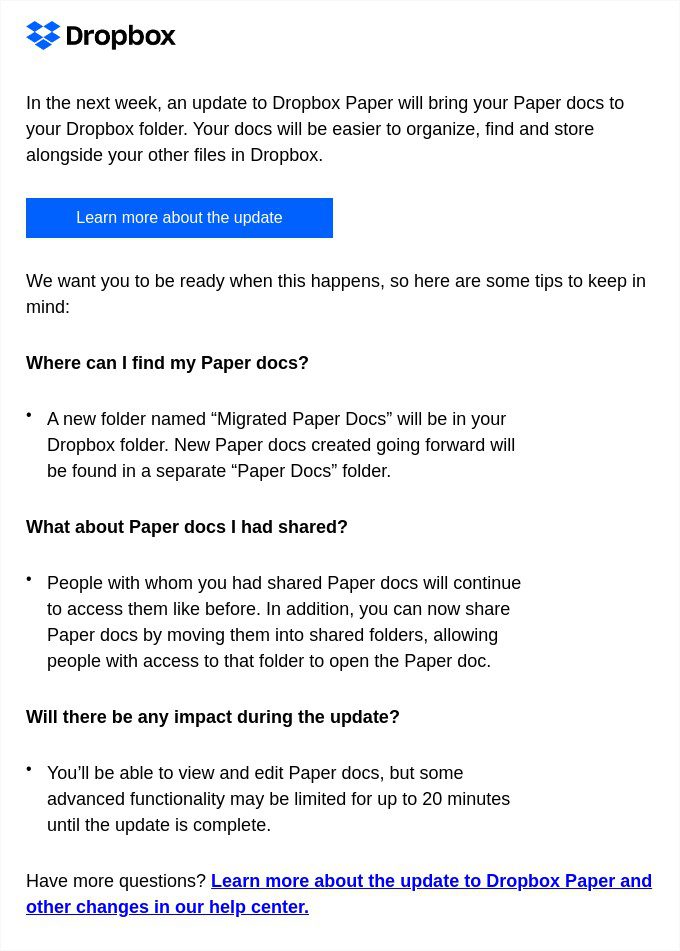
What makes B2B email marketing different from B2C?
If you’ve ever gone from marketing to consumers to marketing to businesses, you know it’s a whole different ballgame. The audience, the strategy, even the pace – it all shifts.
B2B email marketing = longer buying cycles
First, there’s the buying cycle. In B2C (business-to-consumer), someone can see a sale, click “Add to Cart,” and check out in under five minutes. In B2B, that process can take weeks or even months. You’re not dealing with one buyer, but often a team of people, each with their own decision-making power. That alone makes everything more layered.
For instance, if I want to try a new PR platform, I usually run it by our VP of Digital – and sometimes even our CEO – before we get a green light. Between testing the tool, gathering feedback, and getting budget approval, a few weeks can easily go by before I make the actual purchase.
B2B purchases are based on efficiency and ROI
The motivation behind a purchase is also different in B2B email marketing. B2C is often about emotion, convenience, or identity. Buy the gorgeous swimsuit, feel good, look cool. B2B, on the other hand, is all about ROI, efficiency, and long-term value. No one’s buying software or services just because they “spark joy.”
That means your messaging has to shift, too. Your copy has to emphasize that you’re solving a problem. You’re speaking to pain points, budget concerns, and performance goals. So there’s a difference between convincing someone to buy a pair of shoes and convincing them to invest in a new CRM tool for their whole team.
How to build a smart B2B email marketing strategy
With context, goals, and buying cycles so different in B2B, you can’t copy and paste a generic strategy and hope for the best. What works in B2C can fall flat when you’re emailing professionals who scrutinize every purchase more carefully.
Here’s that to keep in mind when planning your B2B email marketing strategy:
- Understand who you’re talking to and the pain points they’re dealing with
- Figure out how your product or service solves their problem – and emphasize that in your messages
- Craft the right emails and time them right so that they feel relevant.
We’ll break it down step by step, but here’s the short version: if your emails don’t show that you get your audience, they’re not going to convert.
Know your audience
You’ve probably heard that “knowing your audience” is key to good marketing – and it is. But in B2B, this goes beyond basic personas. You have to understand the real challenges and priorities your audience faces.
- If you’re emailing a founder, they care about revenue, growth, and efficiency.
- A mid-level marketing manager might be looking for ways to boost campaign performance.
- A CTO is scanning for anything that improves their workflows.
When you keep your persona in mind, you write emails that connect. Just ask: What does this person need from us and what would make them trust us enough to take the next step?
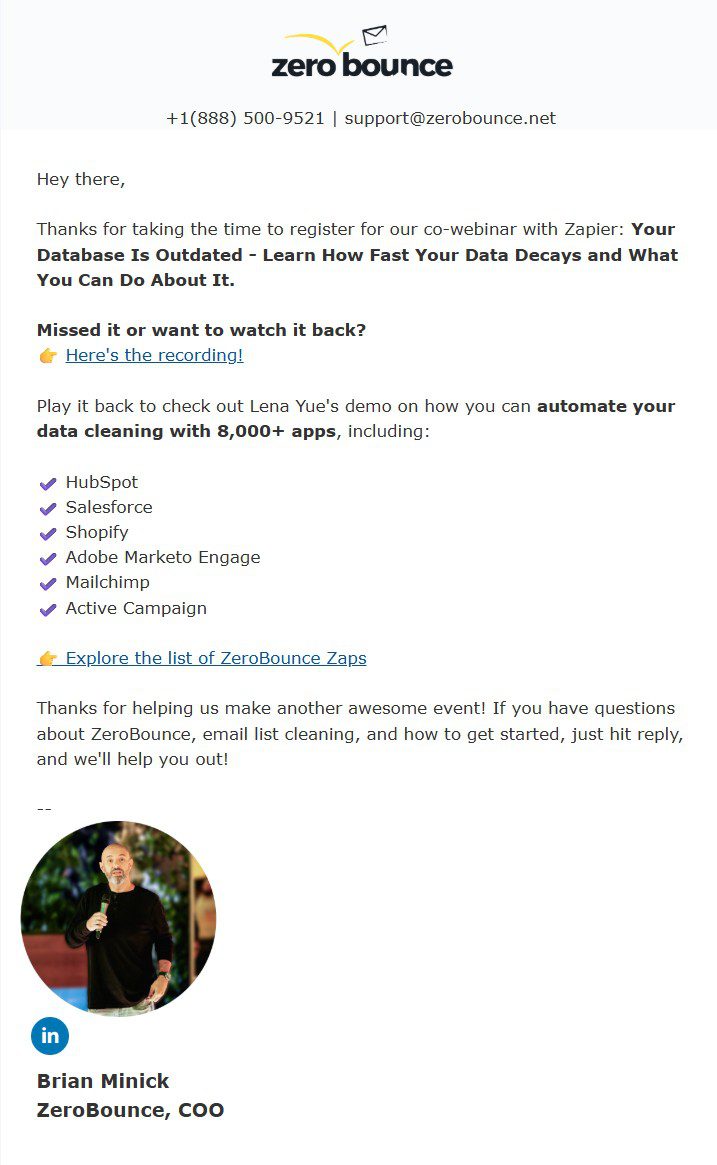
Define your goals
You may be excited to start emailing your list, but before you do that, get clear on what your emails are meant to accomplish. Not every campaign should aim to sell. With certain audiences, you may need to educate and earn trust first.
Your goal changes depending on the different groups of people on your list:
- Lead generation follow-up. Let’s say you’ve captured a new contact through a newsletter signup, a free content offer, or an event. Now your goal is to send emails that build interest and guide that person toward the next step.
- Lead nurturing. You already have the contact. Now you want to increase their trust in your product and move closer to a decision. You may want to send articles, whitepapers, and case studies to accomplish this goal.
- Client retention. Here, your goal is to keep your existing clients happy and engaged. Product updates, in-depth resources, and personalized check-in emails work best in this case.
Try thinking of your B2B email this way and you’ll feel much more confident about your objective – and how to hit it.
Use a healthy email list
You’re moving closer to perfecting your B2B email marketing strategy, but one tactical step you can’t afford to skip is checking the health of your list. Getting bounce-backs, spam reports, or hitting spam trap email addresses all tarnish your sender reputation.
Related: Learn more about your sender reputation and how it affects your deliverability
Everything you do as an email sender has an impact in your reputation – the quality of your database, the number and frequency of the emails you send, and how your audience engages with them.
Here are some negative signals that taint your reputation and can cause your B2B email to land in spam:
- A bounce rate higher than 2%
- More than 0.1% of recipients marking your emails as spam
- Missing proper email authentication (SPF, DKIM, DMARC)
- Hitting spam traps, especially if it happens repeatedly
- Poor engagement (low open and click-through rates)
- Sudden spikes or dips in email volume
There’s a lot that goes into repairing a damaged reputation, so the best approach is to avoid issues in the first place, and that starts with email validation.
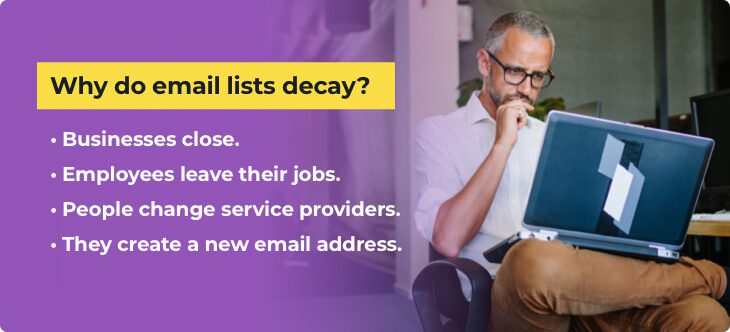
Cleaning your list regularly helps you remove invalid contacts, potential complainers and spam traps, and catch-all emails that are likely to bounce. An email verification service like ZeroBounce scans your list fast and isolates obsolete data with 99% guaranteed accuracy.
ZeroBounce can also identify abuse emails belonging to users who have a history of reporting many emails as spam. Many of our customers choose to remove those types of emails from their lists to mitigate potential spam complaint risks.
Pro tip: Did you know that 28% of the average email list degrades every year? That’s 2.7% a month, and the number may be even higher in B2B industries. To keep bounce rates low and maintain your reputation, consider pruning your data quarterly and before every important campaign.
Segment your list from the start
When I first started sending emails on behalf of ZeroBounce, my goal was to show how our email validation service helps businesses clean their email lists and improve deliverability. But at the time, I had no idea how to segment our audience, so I’d just send the same email to our whole list. Looking back, I’m surprised those campaigns got any engagement at all.
You need a better approach than mine – and the good news is email marketing and CRM tools now make things so much easier for you.
Start by looking at your list through the lens of your goals. If you’re trying to nurture leads, pull in contacts who downloaded a lead magnet but haven’t booked a demo. For client retention, filter for current customers. You can even filter them by plan level or product usage. And if you’re focused on lead generation follow-up, you might build a list of people who signed up at an event or webinar, or who downloaded an ebook.
Here are a few useful ways to segment your B2B email list:
- Stage in the funnel – Are they new leads? Warm prospects? Existing customers?
- Job title or role – A marketing manager and a CTO don’t care about the same features.
- Industry or company size – A small startup and a large enterprise often have different priorities.
- Behavior – What have they clicked on? Which pages did they visit? Did they attend a webinar?
The more specific you get, the more relevant your emails will feel – and that’s what boosts your engagement. A ZeroBounce study found that 46% of consumers will open a brand email every time if that company always sends them good emails.
Choose the right types of emails
Now that you’ve split your email list into segments, it’s time to decide what types of emails to need to craft for each group. Someone who just subscribed to your newsletter won’t resonate with a product update, and a long-time customer may need more in-depth information.
Think about each group and the stage they’re in – what kind of message would be most helpful to them? Here are a few types of B2B emails you can include in your program.
- Welcome emails. Great for newsletter signups or new leads you acquired via events, webinars, and content offers. They help introduce your brand and give your prospects something to look forward to.
- Educational content. These emails work for several segments, but are ideal for new customers. Consider including articles, guides, and tutorials that solve a problem for your audience.
- Lead nurturing emails. Designed to move prospects closer to a decision by offering things like case studies, social proof, or product comparisons.
- Sales emails. These are direct marketing emails, so their goal is to make a sale. Discounts and similar offers perform best and nudge your warm leads toward conversions.
- Retention emails. Updates, tips, and feature highlights to support your existing customers and prevent churn.
- Re-engagement emails. Contacts who’ve gone cold may need a light nudge. A win-back campaign can help you revive their interest and engage again.
Pro tip: Creating and setting up these email sequences can feel overwhelming, but you don’t have to do everything at once. Pick one, get it right, monitor your metrics – and then move on to the next series. For example, you can start with your welcome email, then put together an educational campaign.
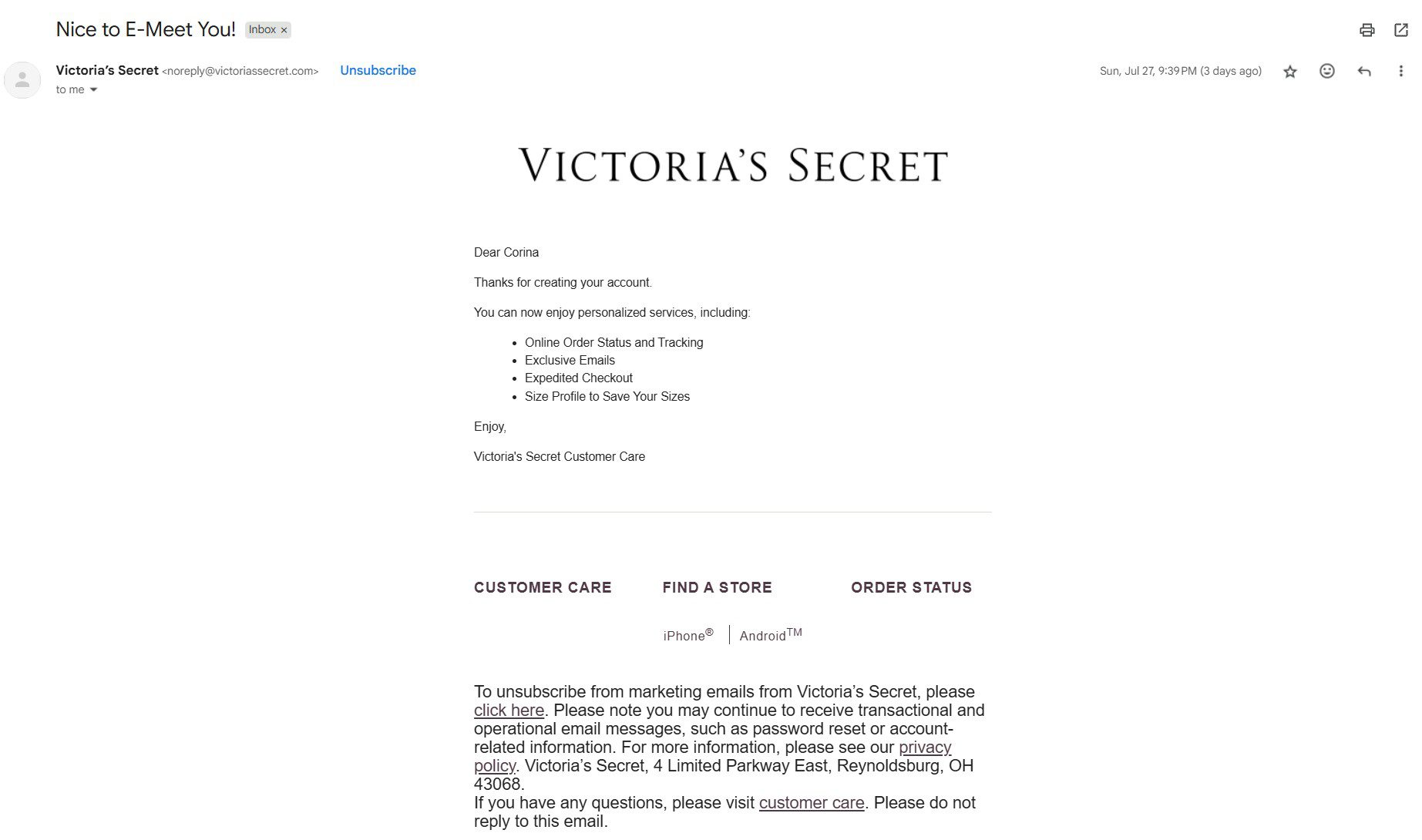
Warm up your IP and domain
Remember how we said that sudden spikes in sending volume can trigger spam filters? If you’re sending from a brand-new domain or dedicated IP address, don’t blast your entire list right away. You need to warm it up first by gradually sending in small batches. This approach helps you build trust with inbox providers like Gmail and Outlook.
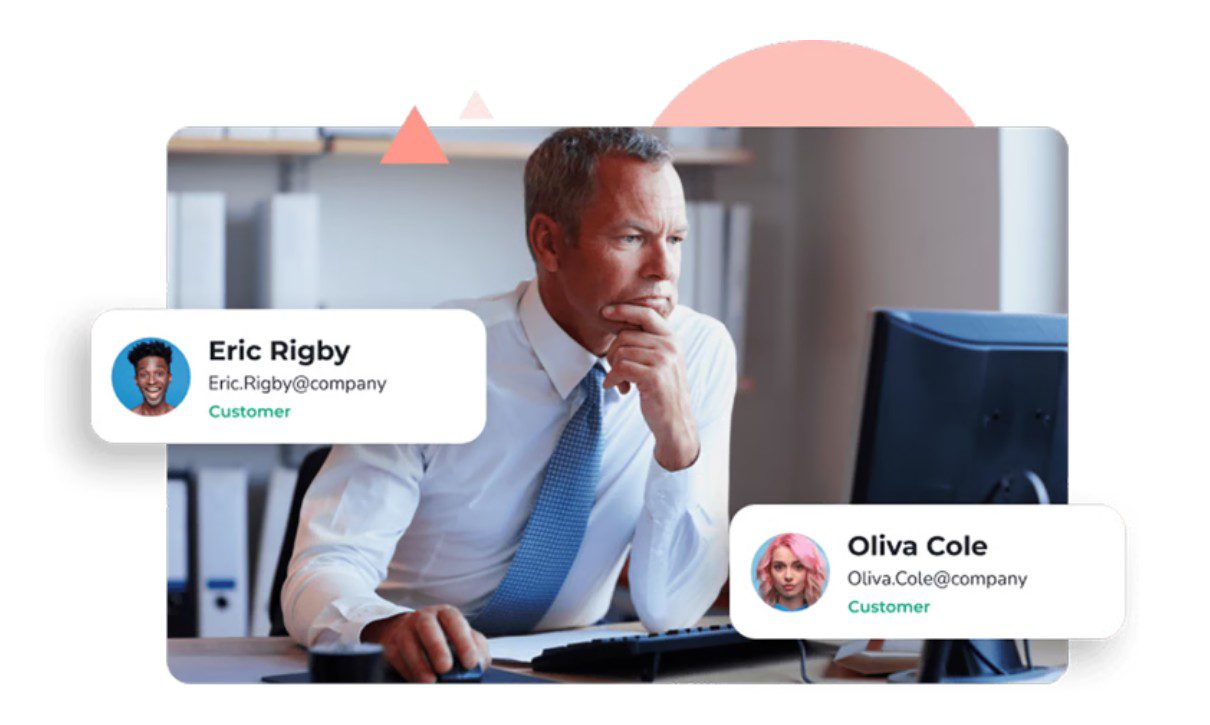
A proper email warmup process lets you:
- Ramp up your sending volume safely
- Avoid spam folders
- Build a strong reputation with mailbox providers
You can warm up your domain manually by sending emails to smaller segments of your database. If you want to automate the process and avoid any errors, you can use an email warmup tool. You can customize it to your needs and have peace of mind knowing your reputation is being built the right way.
Mistakes that hurt your B2B email marketing performance
Even with a solid strategy, it’s easy to fall into a few habits that quietly hurt your email performance. Here are some common mistakes to watch for – and how to fix them.
Buying email lists
This is a surefire way to burn your domain and kill your engagement. Most of the contacts don’t know who you are. Best scenario? They’ll unsubscribe, but many of them may report your email as spam. Build your own list and use double opt-in to confirm every new subscription.
Not optimizing for mobile
Our recent survey found that 64% of people check their email on their phones and tablets, so making sure your emails look great across devices is a must. Avoid overly long subject lines and keep your design simple and easy to scan on any screen.
Using vague subject lines
“Big news” and “Check this out” don’t cut it in B2B email marketing. Your audience is busy and is scanning the inbox for specific information, so make the subject line benefit-driven and clear about what’s inside.
Sending too often – or not enough
Many marketers struggle with finding a good cadence for their emails. Over-emailing leads to unsubscribes. But if you go silent for weeks or months, people forget who you are – and it hurts your domain, too. Find a rhythm that keeps you visible but not overwhelming.
Overloading your emails with content
It’s tempting to cram in everything – offers, articles, product news, a testimonial, maybe a webinar link just for good measure. But too much at once can overwhelm your reader. Keep your emails focused: one clear message, one call to action. The exception? Your newsletter. That’s where you can tease several resources your audience can pick from.
How to measure success and optimize over time
Avoiding these mistakes and implementing the tactics we talked about earlier will put you ahead of many B2B email marketers. But to really improve over time, you need to track what’s working – and tweak as you go.
Monitor your metrics closely
I used to check the metrics for every single email I sent. Doing that trained my eye to look for patterns and anomalies.
For instance, I noticed that overly technical emails didn’t get a lot of engagement – in fact, they usually triggered more unsubscribes. Educational emails, on the other hand, consistently performed well. That told me our audience was looking for helpful tips, so I doubled down on that.
Treat every campaign as a test. The more you pay attention to your data, the easier it becomes to refine your strategy. Don’t obsess over every number, but do watch for trends. Your subscribers will show you what they want.
Test your inbox placement
Warming up your domain and keeping a clean email list already makes it more likely for your emails to go to the inbox. Looking to improve even more? Try testing your email deliverability before you hit send – so you can see where your emails may go. If they land in spam during your test with popular email providers, you can make adjustments until your inbox placement increases.
Need some good B2B email examples?
Sometimes you can have all the knowledge you need and it still feels hard to implement the tactics you’ve learned. If you want a bit of inspiration, I put together a list of B2B email marketing examples that show some of the best strategies in action.
Also need some copywriting tips? Here’s how to write an effective B2B email.
Start a conversation today
There isn’t a single winning formula for B2B email marketing, but there is a smart way to do it.
If you define your goals, keep a clean list, segment your audience, and tailor your message to where people are in their journey, you’re already ahead of the pack. From there, it’s about paying attention to your metrics and adjusting when things stop working.
Most of all, remember your emails aren’t just “campaigns” – they’re conversations. Make them helpful, respectful, and relevant, and the results will follow.
Frequently asked questions about B2B email marketing
B2B email marketing is a strategy businesses use to communicate through email with other businesses, not individual consumers. B2B email marketing helps companies promote products, services, or content to other companies, build relationships, and drive sales.
Effective B2B email marketing requires a deep understanding of the buyer persona, their needs, and purchasing behavior. Every message should reflect the prospect’s experience with the brand and the information they need to move forward. Relevant, useful emails see higher engagement and help boost conversion rates.
In B2B, email marketing works when it focuses on solving problems, not just selling. A company may increase sales when they send educational content, case studies, or product updates, depending on each stage of the buyer’s journey.
Very effective, if done right. A ZeroBounce study shows that 93% of people check email daily, and 35% of professionals spend up to five hours a day in their inboxes. That alone gives email a huge advantage over social media posts, which often get buried by algorithms or missed entirely.
Table of Contents
- Quick answer
- What is B2B email marketing?
- What makes B2B email marketing different from B2C?
- B2B email marketing = longer buying cycles
- B2B purchases are based on efficiency and ROI
- How to build a smart B2B email marketing strategy
- Know your audience
- Define your goals
- Use a healthy email list
- Segment your list from the start
- Choose the right types of emails
- Warm up your IP and domain
- Mistakes that hurt your B2B email marketing performance
- Buying email lists
- Not optimizing for mobile
- Using vague subject lines
- Sending too often – or not enough
- Overloading your emails with content
- How to measure success and optimize over time
- Monitor your metrics closely
- Test your inbox placement
- Need some good B2B email examples?
- Start a conversation today
- Frequently asked questions about B2B email marketing






